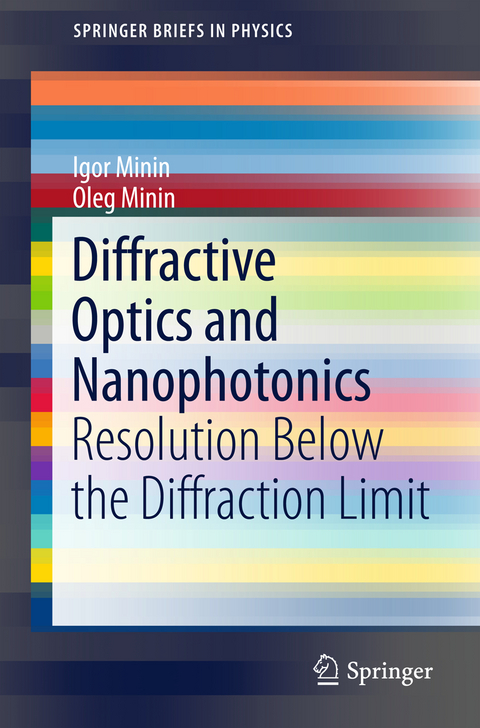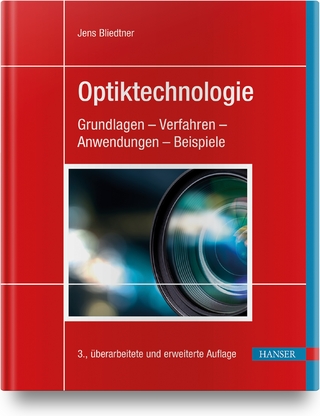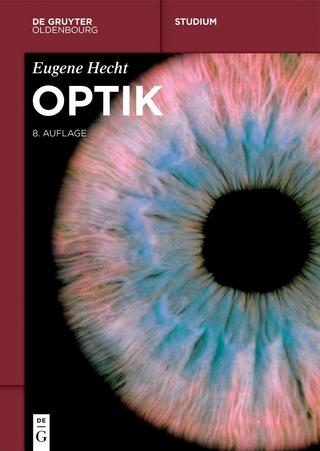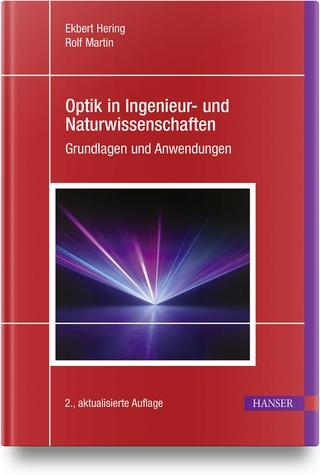
Diffractive Optics and Nanophotonics
Springer International Publishing (Verlag)
978-3-319-24251-4 (ISBN)
In this book the authors present several examples of techniques used to overcome the Abby diffraction limit using flat and 3D diffractive optical elements, photonic crystal lenses, photonic jets, and surface plasmon diffractive optics. The structures discussed can be used in the microwave and THz range and also as scaled models for optical frequencies. Such nano-optical microlenses can be integrated, for example, into existing semiconductor heterostructure platforms for next-generation optoelectronic applications.
Chapter 1 considers flat diffractive lenses and innovative 3D radiating structures including a conical millimeter-wave Fresnel zone plate (FZP) lens proposed for subwavelength focusing. In chapter 2 the subwavelength focusing properties of diffractive photonic crystal lenses are considered and it is shown that at least three different types of photonic crystal lens are possible.
With the aim of achieving subwavelength focusing, in chapter 3 an alternative mechanism to produce photonic jets at Terahertz frequencies (terajets) using 3D dielectric particles of arbitrary size (cuboids) is considered. A scheme to create a 2D "teraknife" using dielectric rods is also discussed. In the final chapter the successful adaptation of free-space 3D binary phase-reversal conical FZPs for operation on surface plasmon-polariton (SPP) waves demonstrates that analogues of Fourier diffractive components can be developed for in-plane SPP 3D optics.
Review
ing theory, modelling and experiment, this book will be a valuable resource for students and researchers working on nanophotonics and sub-wavelength focusing and imaging.Igor V. Minin received M.S. in Physics, Novosibirsk State University, Russia (1982) and the Ph.D. degree in radio-physics including quantum physics from the Leningrad Electro-Technical University, Russia, in 1986 and the D.Sc. degree in calculation experiment technology and microwave antennas from the Novosibirsk State Technical University, Russia, in 2004.He worked as a Visiting Researcher at the DaimlerChrysler AG, Germany, Harbin Institute of Technology, China and Samsung Electronics, Korea. He has been an Invited Lecturer at several universities and institutions, co-chairman of several IEEE conferences and symposiums. He was with the Novosibirsk State Technical University, Russia from 2001 to 2006, as a Full Professor at the Department of Information Protection. Now Igor Minin is a full professor with the Siberian State Academy of Geodesy, Russia. Minin I.V. is a Federal expert of the Russian Government committee in the scientific field (2014-to present).Oleg V. Minin received M.S. in Physics, Novosibirsk State University, Russia (1982) and the Ph.D. degree in radio-physics including quantum physics from the Institute of Atmosphere Optics, Tomsk, Russia, in 1986 and the D.Sc. degree in optics and microwave antennas from the Novosibirsk State Technical University, Russia, in 2004. He worked as a Visiting Researcher at the DaimlerChrysler AG, Germany, Harbin Institute of Technology, China and Samsung Electronics, Korea. He has been an Invited Lecturer at several universities and institutions, co-chairman of several IEEE conferences and symposiums. He was with the Novosibirsk State Technical University, Russia from 2001 to 2006, as a Full Professor at the Department of Information Protection. In the field of diffractive optics of millimeter/THz wave Professors I.Minin and O.Minin achieved a number of pioneering results. They are the world leading authority on arbitrary 3D diffractive focusing elements. In particular, they for the first time observed 3D subwavelength resolution for diffractive optics with focal distances less wavelength.Profs. Minin introduced 3D real time quasioptical “radio vision” system for detection of hidden objects in millimeter/THz waves based on frequency properties of 3D diffractive optics and provided the first observations of the real-time images with quality equal to optical.They discovered and studied the ablation and erosion process on hypervelocity flight of metal body in millimeter wave. Profs. Minin introduce a pulse plasma antenna, including explosive antenna in microwaves/millimeter waves.Profs. Minin recently started highly innovative work on sub-wavelength light concentration and super-resolution using the concept of arbitrary 3D dielectric particles.
Foreword.- Introduction.- 1 3D Diffractive Lenses to Overcome the 3D Abby diffraction limit.- 2 Subwavelength Focusing Properties of Diffractive Photonic Crystal Lens.- 3 Photonic Jet Formation By Non Spherical Axially and Spatially Asymmetric 3D Dielectric Particles.- 4 SPP Diffractive Lens as one of the Basic Devices for Plasmonic Information Processing.- Conclusion.
| Erscheint lt. Verlag | 10.11.2015 |
|---|---|
| Reihe/Serie | SpringerBriefs in Physics |
| Zusatzinfo | XIV, 65 p. 26 illus., 6 illus. in color. |
| Verlagsort | Cham |
| Sprache | englisch |
| Maße | 155 x 235 mm |
| Themenwelt | Naturwissenschaften ► Physik / Astronomie ► Optik |
| Technik ► Elektrotechnik / Energietechnik | |
| Schlagworte | 3D diffractive optical elements • Diffractive photonic crystal lens • Microwaves, RF and Optical Engineering • nanophotonics book • Nanophotonik • nanoscale science and technology • optical and electronic materials • Photonic jets at THz frequencies • Physics and Astronomy • Plasmonic information processing • Sub-Wavelength resolution • Super-Resolution Optics • Surface plasmon diffractive optics |
| ISBN-10 | 3-319-24251-2 / 3319242512 |
| ISBN-13 | 978-3-319-24251-4 / 9783319242514 |
| Zustand | Neuware |
| Haben Sie eine Frage zum Produkt? |
aus dem Bereich


